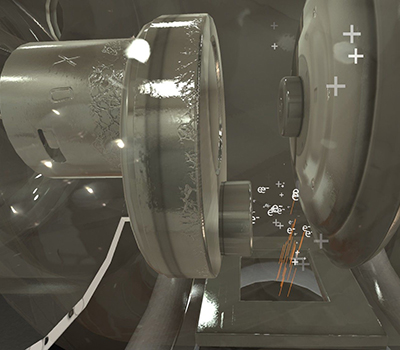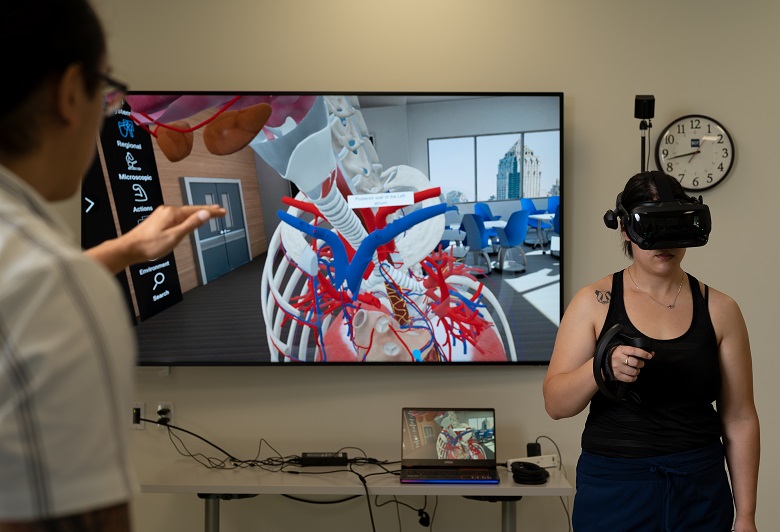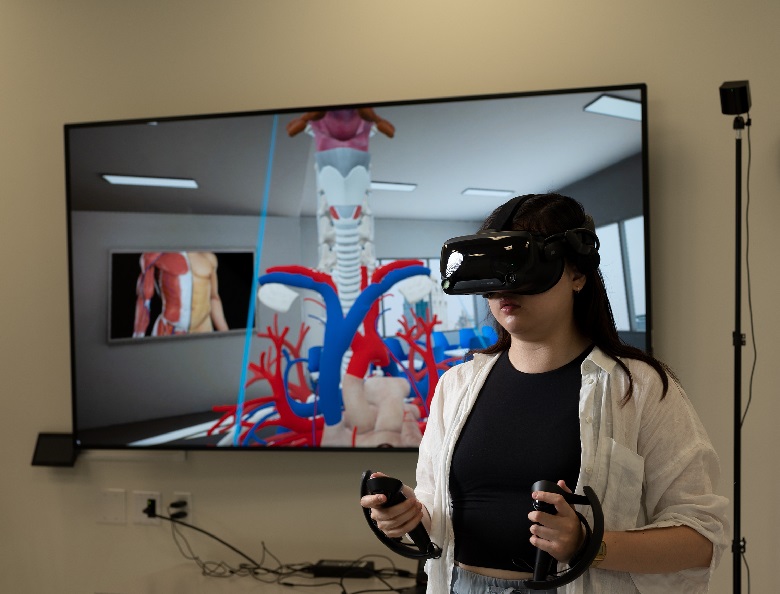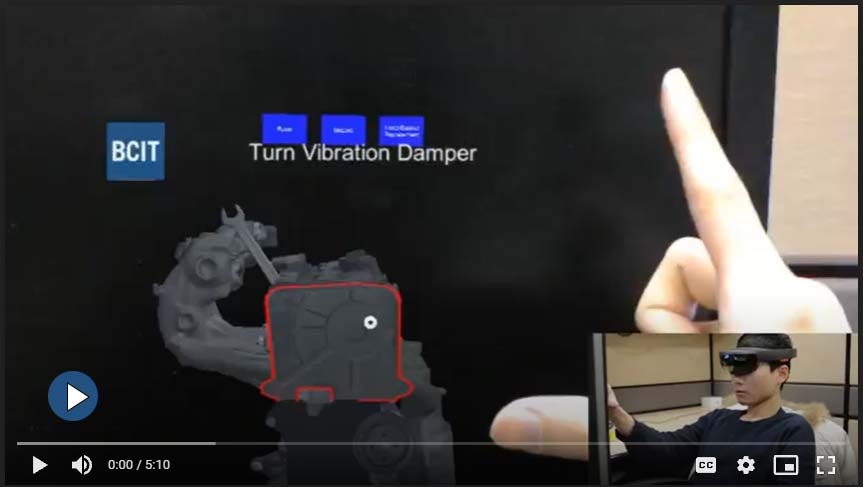Augmented and virtual reality allow learners to interact with a three-dimensional image or environment in a way that seems real.
VR in Medical Radiography Education
Today’s immersive VR tools make it easier for students to visualize the complex systems of skin, blood vessels, muscles, and bones that make up the human body. BCIT’s Medical Radiography program has integrated two different simulation programs into its curriculum—one to help students develop a 3D spatial sense of how organs fit within the body and one to help them learn how to best position a patient to get the ideal X-ray view. Using research, instructional design, and implementation expertise from the PRISM team, faculty have integrated the VR experience directly into the curriculum through daily Learning Hub activities.
3D Organon is an anatomy program that allows students to virtually manipulate and examine the organs that make up different body systems. A key aspect of the software is that it allows users to look inside the body from different angles, called “planes,” just as imaging equipment would be positioned from different angles. Users can also cut away sections to view the body in layers.
The second VR software being used is Skilitics, which simulates an X-ray room and the process of taking an X-ray. The software uses an anatomically accurate virtual dummy that learners position on the table. Students can finetune their skills in the simulated environment, which gives them more confidence and a faster learning curve when they move on to a clinical setting.

Unity VR Be the Beam
Be the Beam is a guided tour experience that shrinks users down and places them inside complicated X-ray machinery. The goal of this tour is to educate learners on the physics of how X-rays are produced by allowing them to witness the creation of X-rays in slow motion, right in front of their eyes. This project was completed in 2021 and is now widely used by the MRAD program. During development, it received national recognition, with team members winning a 2019 SIM Innovator Award for Educational Innovation.
Unity VR Railway Simulation
In 2020, 965 rail accidents were reported to the Transport Safety Board of Canada (TSB), including 82 involving dangerous goods. This BCIT standalone VR application simulates an accident scene involving a railway train that contains UN 1017 transport goods (that is, chlorine). This VR application was designed to increase railway knowledge to help future workers respond appropriately to disasters.
The next iteration of this application will simulate how the emergency medical responder in the area will respond to this kind of incident.
AR/VR Removing Tensioner Spring
The automotive department at BCIT has a number of AR/VR simulations that allow learners to practice working with automotive parts on a computer screen. Once learners have mastered the skills virtually, they can move to the workshop and work on an actual motor, where they’re faster and have less chance of breaking an expensive part.
AR Virtual Patient Assessment Simulation
This application allows the learner to interact with a simulated patient using a desktop keyboard, voice commands, or an arrow marker. In this video, the user triggers a seizure in the patient and practices placing an oxygen mask to control the seizure.
Empathy in Healthcare
The goal of this project is to immerse nursing students into virtual reality simulations aimed at evoking an empathetic response towards patients who are extremely difficult to work with, abusive or even violent. Nurses’ emotional responses will be monitored before, during and following these simulations to determine if the simulations have a positive effect on their ability to empathize with difficult patients. With this project, PRISM’s VR development team is using both motion capture and facial capture of professional actors to create realistic body movements and facial expressions in our animations.




